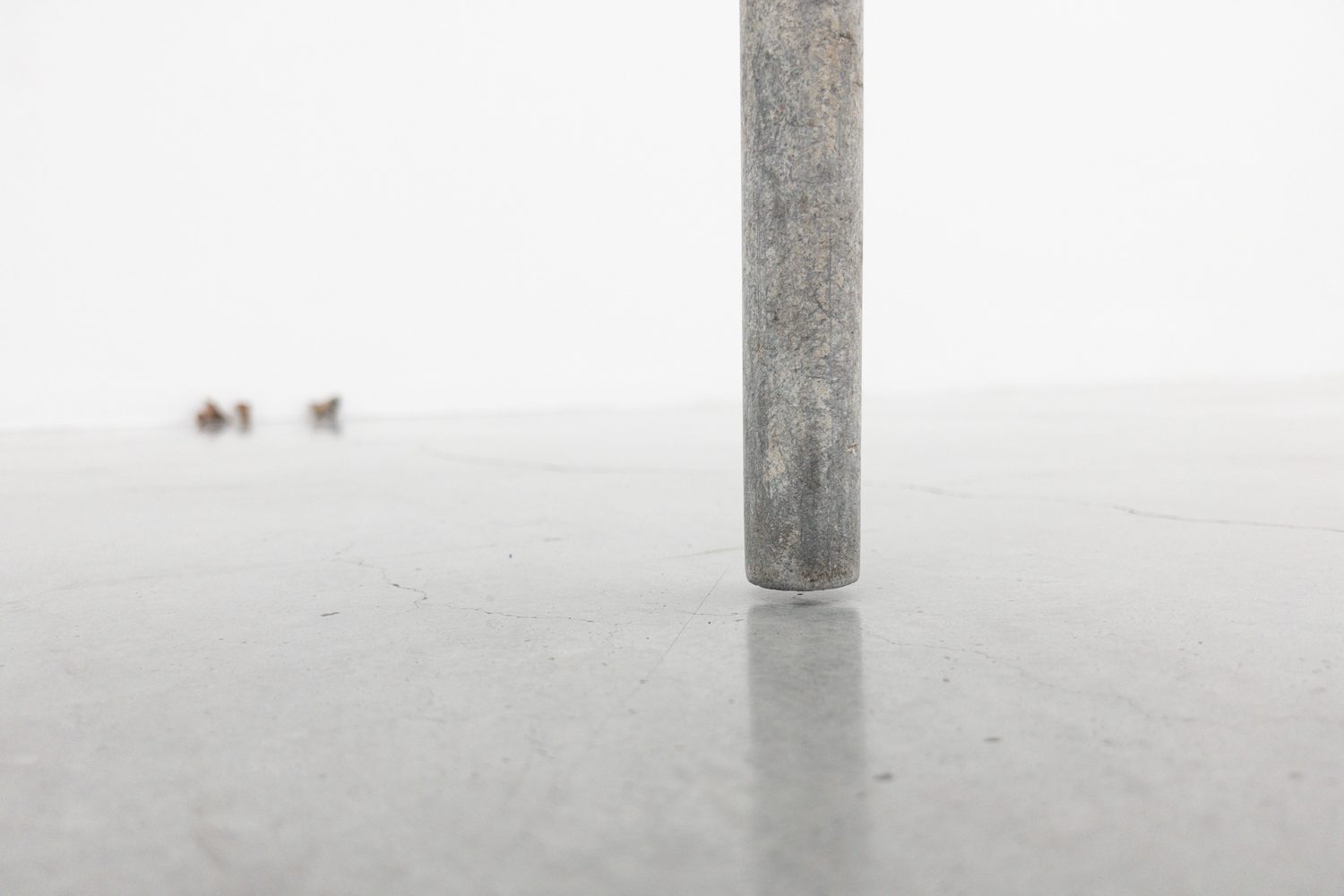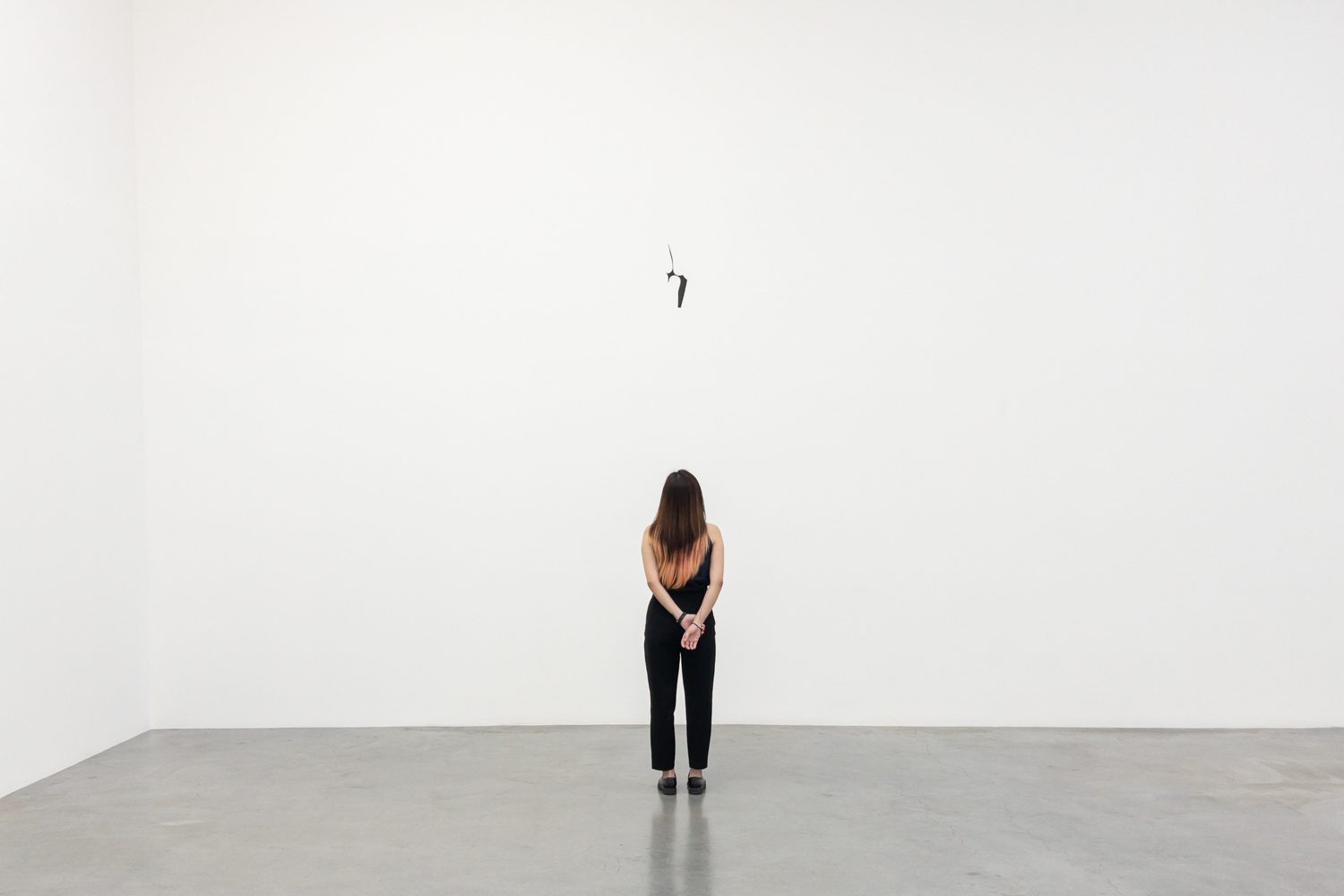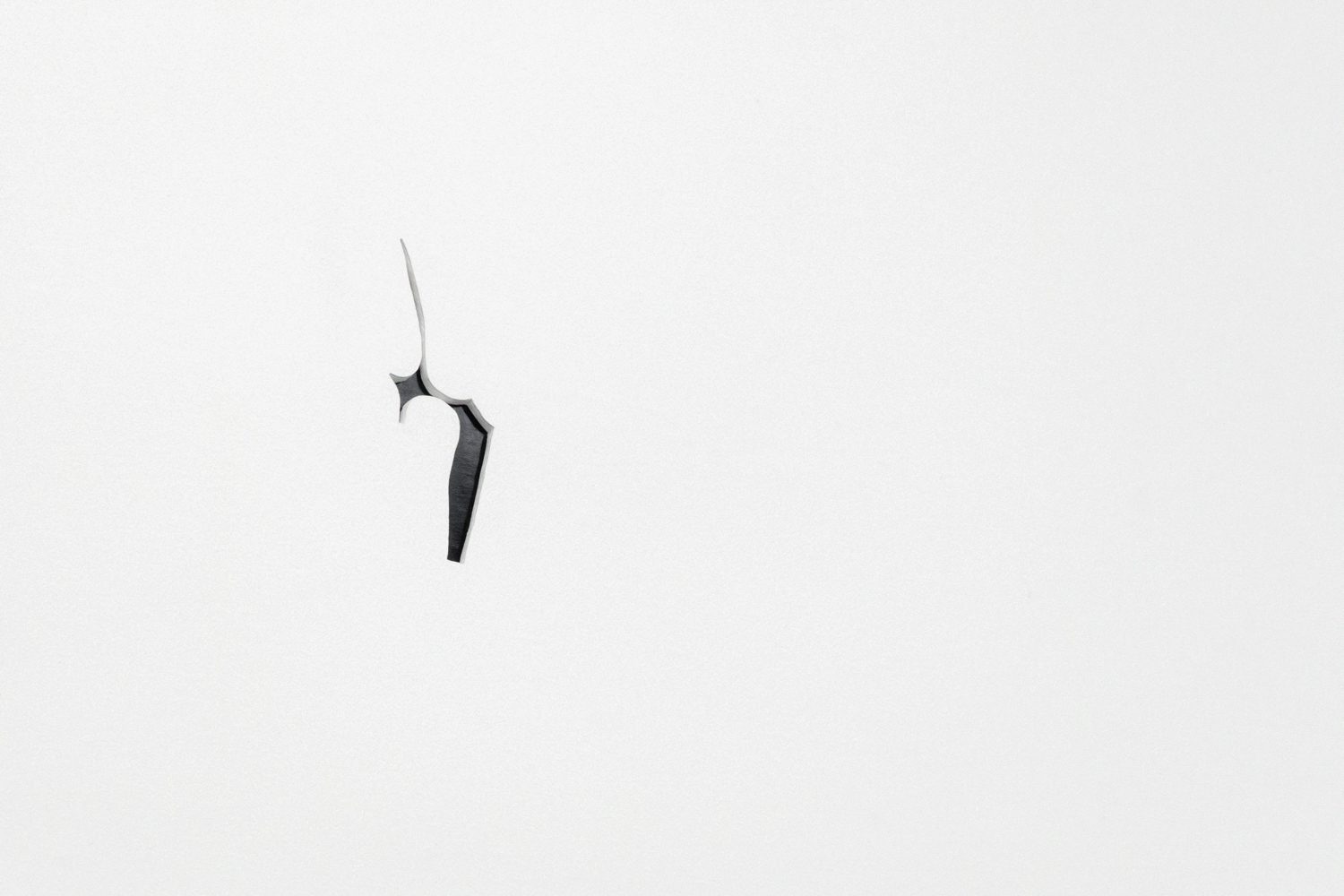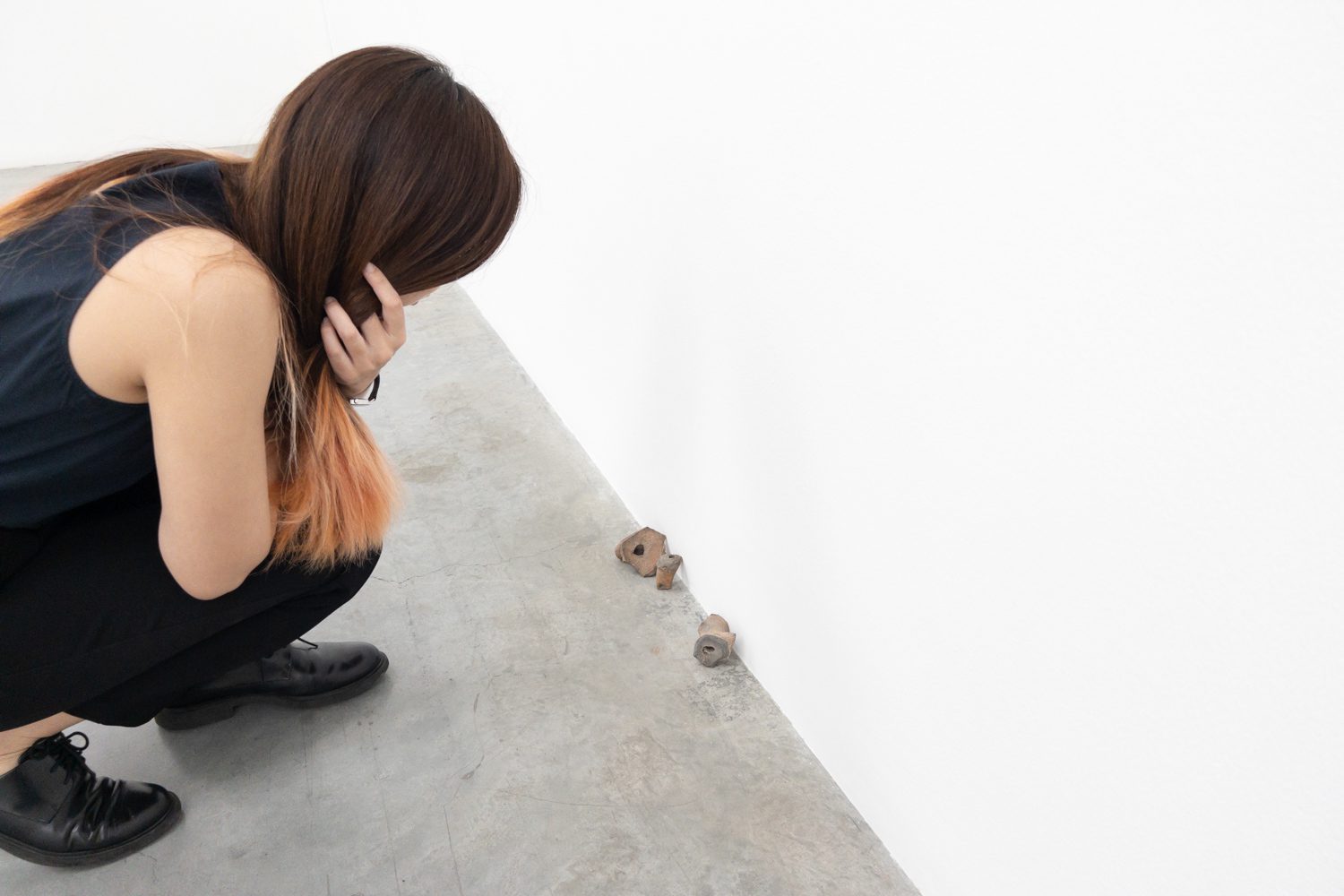A SOLO EXHIBITION BY TANATCHAI BANDASAK WHO IS INTERESTED IN THE DIVERSE INTRINSIC CHARACTERISTICS OF OBJECTS UNDER THE THEME OF WATER, MOISTURE, AND THE SYNERGY BETWEEN TWO ELEMENTS MOVING TOGETHER IN HARMONY
TEXT: WICHIT HORYINGSAWAD
PHOTO: KETSIREE WONGWAN
(For Thai, press here)
White Cube / Space / Event
The exhibition’s inception revolves around the notion of emptiness. Reflecting on his own previous visits to the gallery, Tanatchai Bandasak experienced a sense of hollowness, expansiveness, and arid dryness within the space at BANGKOK CITY CITY GALLERY. The distinct characteristics of the gallery, defined by its white-walled, box-like structure, were evident whether viewed externally or felt from within. Deliberately deviating from the conventional approach of creating a new exhibition, Tanatchai deliberately avoided imposing, occupying, and dominating the gallery space with objects. Instead, he embraced a contrary perspective, utilizing objects as entities that interact with the emptiness, depositing and merging their own elements into the spatiality of the event, which is inherently transient.
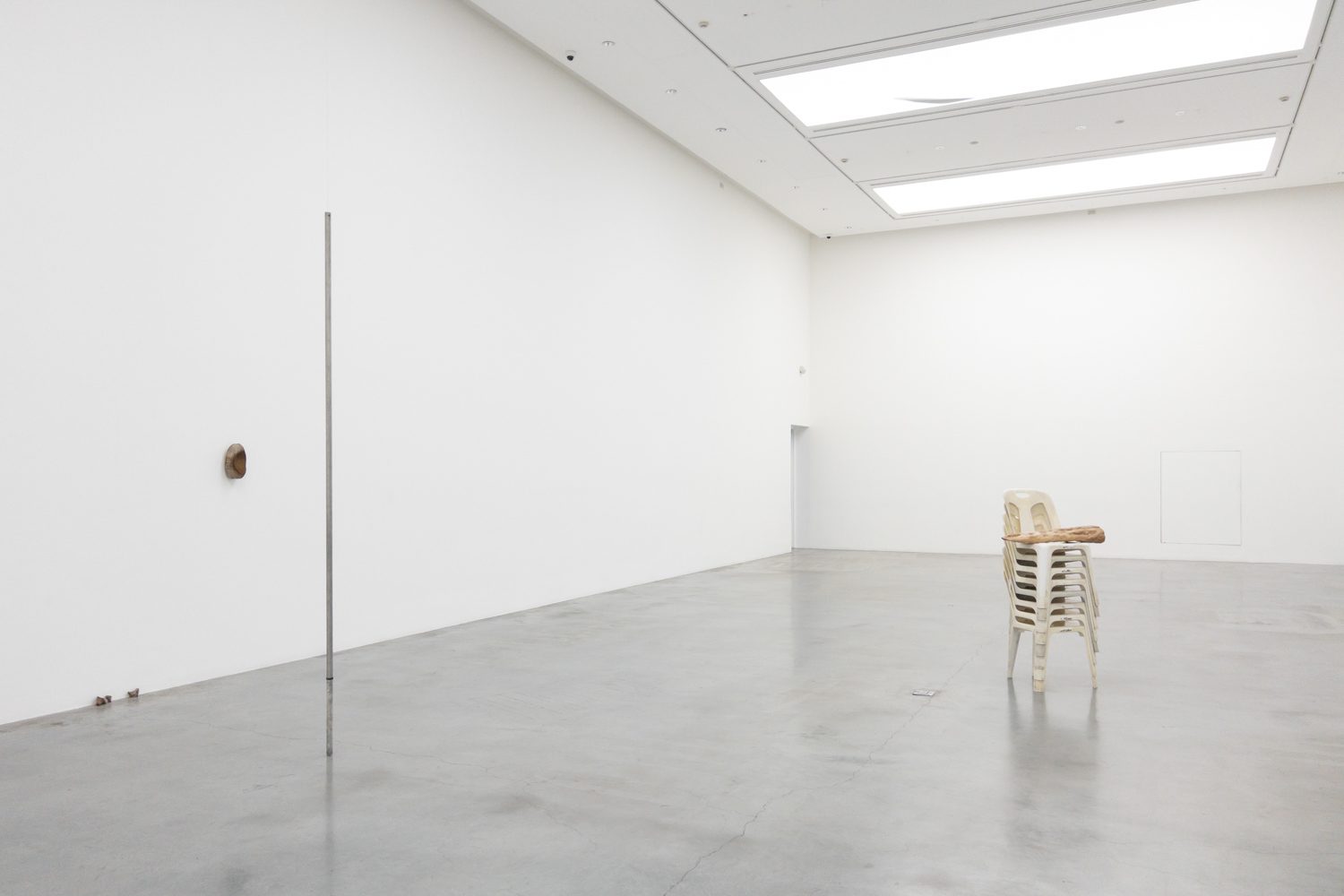
Water / Insulated / Enveloping / Ambiguity
In this exhibition, Tanatchai embarks on an exploration fueled by his interest in the diverse intrinsic characteristics of objects. These characteristics span from physical objects, such as insulation and enveloping properties, to the uncertainty or elusive states that emerge ambiguously when observed as opposing pairs—the juxtaposition of enclosure and openness, the feeling of complete exposure. Everything he meticulously selects is intricately connected to the theme of water, moisture, and the synergy between two elements moving together in harmony.
A New Cave
The exhibition’s title takes a cue from a newspaper headline, revealing the discovery of a cave that captured the artist’s attention. Tanatchai’s fascination lies in the collision of the term ‘cave,’ evoking notions of age, antiquity, and the exploration of enduring dark spaces, with the addition of the word ‘new’ before it. This introduces a shift in interpretation, transforming the term into an expression of the thrill associated with uncovering something novel that exudes a particular radiance. This dynamic interplay generates a sense of ambiguity and internal contradiction, adding complexity to the overall narrative.
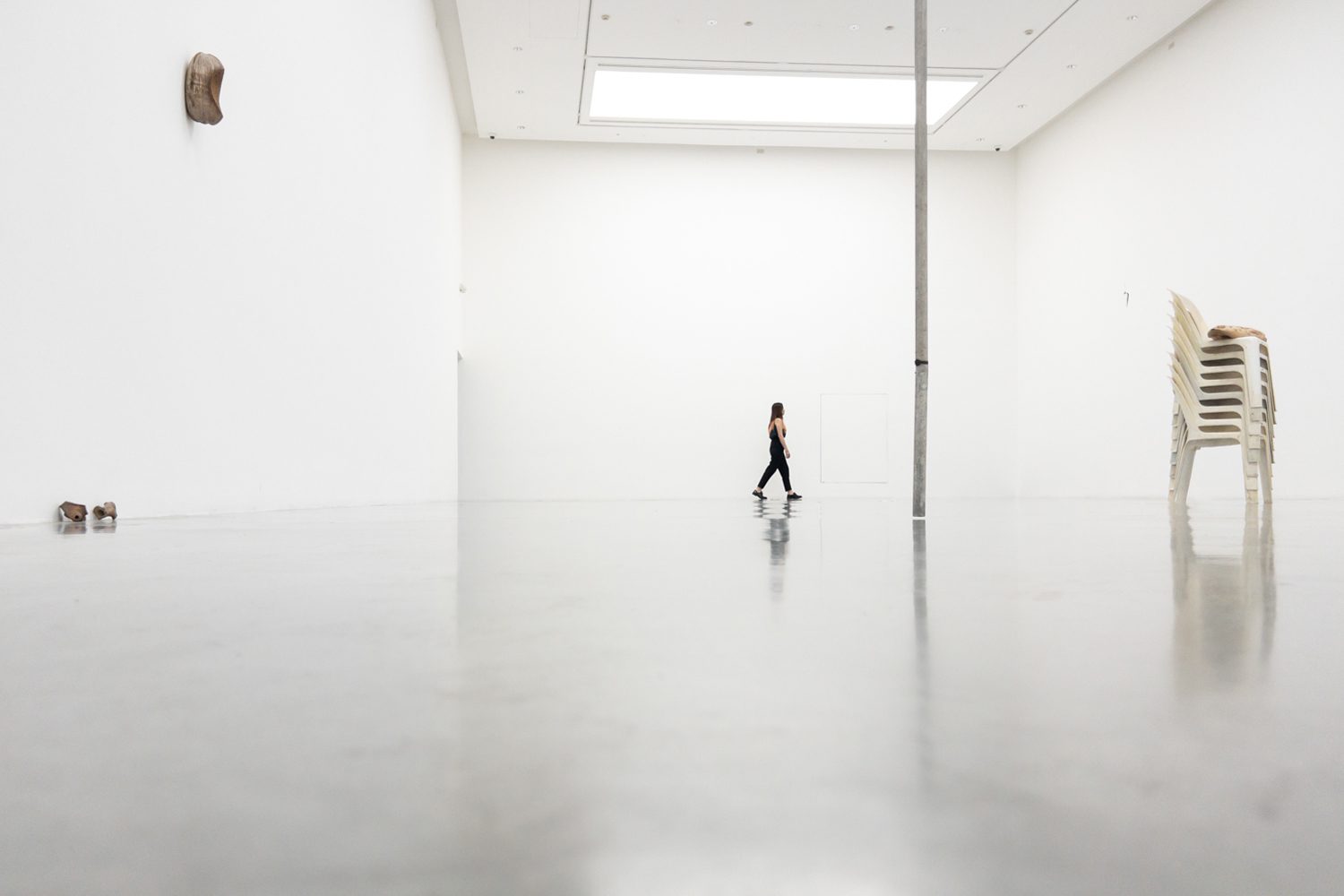
Landscape
Tanatchai’s interest lies in the characteristics of a landscape that encompasses both horizontal and vertical dimensions. These features influence how relationships between objects and empty spaces in the exhibition are organized and conveyed. The materialization draws from the artist’s experiences of exploring archaeological sites, excavating artifacts, and undertaking cross-country and cross-continent journeys, especially his recent visit to the Zen Garden at Daisen-in Temple (大仙院) in Kyoto which left a profound impression on him. Here, white pebble stones form two mountain-like piles, creating the illusion of mountains surrounded by ripples of water. Tanatchai finds intrigue in the garden’s landscape, which employs stones as channels that lead one to perceive them as aquatic elements, creating a sensation of movement despite the dryness. The contrasting dynamics magically craft the vision of moving ripples using the white stones, whose solidity stands in complete opposition to the elemental properties of water.

SsSsSsSsSsSs (2024) / Coastal (2024) / Untitled (non-dormant) (2024)
Object
Tanatchai doesn’t treat objects with an attempt to transform them into sculptures; instead, he uses them as conduits, guiding viewers toward something undefined and without clear boundaries. Every piece is arranged with deliberate simplicity, whether laid flat or propped up. Simultaneously, Tanatchai emphasizes the inescapable historical narratives embedded within each object. His unwavering commitment to authenticity and fidelity to the materiality and reality of each piece is palpable. For those uninitiated in the context of each object (acknowledging, of course, that readers of this article may possess some background), the potential for diverse perceptions based on individual experiences is boundless. This multiplicity of perspectives grants viewers the liberating freedom to navigate the exhibition with a sense of autonomy.
Untitled (non-dormant) (2024)
On one occasion, Tanatchai had the chance to converse with a pool cleaner, who shared a tidbit with him: if a swimming pool isn’t cleaned at least once a week, algae will inevitably take hold, transforming it into what pool cleaners refer to as a ‘dead pool.’ This revelation prompted Tanatchai to realize that maintaining a pool’s vitality requires someone dedicated to the task of cleaning. A vivid image took shape in his mind—that of a pool cleaner wielding the metal cleaning tube to scoop up algae, creating ripples on the water’s surface. He etched this vision into his memory with the intention of incorporating it into his artistic endeavors. His ensuing task was to search for this specific metal cleaning tube throughout Bangkok. Eventually, he stumbled upon a closed swimming pool in the Dao Khanong area that had been shut down since the pandemic. There, a tube lay dormant.
– (2024)
When manufacturing flip-flops with a rubber sheet press machine, the remaining rubber scraps, or the ‘negatives’ created from the rubber pressing process, find applications in two distinct ways. The first is through ‘frog rafts,’ where frog farmers repurpose these scraps as shelters for maturing tadpoles. Another application involves using them as ‘impact guards’ in stone factories to prevent stones from directly colliding. Tanatchai ventured to a stone factory in Pak Chong with the aim of exploring the designated waste disposal area to locate rubber scraps previously used as impact guards. The shapes of these rubber pieces transformed under pressure.
In the initial attempt, the rubber pieces were reintroduced for re-pressing by the stone slabs but encountered failure due to damage done to the slabs. Returning to his fundamental interest in this object, he flipped a rubber scrap back and reversed its contact with a stone slab, which is the object it once supported. Essentially, the process flipped the remaining flexibility of the rubber in response to a significant tensile force it was exposed to. In the final iteration, the artist created a wall engraving of discarded soles from cut rubber sheets used as cushioning material in a stone factory. The pressed marks were employed as a link—a representation of the history of this object’s existence in the context of stone factories, mines, or any mountainous regions. He used them as a way to assimilate into the new space. The failure of the initial idea presented a new opportunity.
SsSsSsSsSsSs (2024)
The spout from an earthenware vessel: as tea cascaded from the teapot into the teacup, Tanatchai found himself captivated by the sensation of fluid transferring from one object to another. His curiosity was piqued as he examined the teapot’s spout, acting as the connecting link, and pondered the unique feeling emerging within the spout from an earthenware vessel. This curiosity prompted him to embark on a quest to collect similar items, leading him to discover an online community of underground excavators showcasing and selling their unearthed findings. Among them were fragments of spouts that had detached from their vessels, resulting in two openings without encasement, making them incomplete and excluded from the whole. The sensation differed when it was fully functional, with tea flowing through it. In that moment, he felt that the ability to transmit and connect disappeared, akin to dispersed gas. Within the exhibition space, Tanatchai discreetly positioned the fragments of teapot spouts along the wall, almost casually setting them aside. Placed close to the wall, like a cautious gesture to prevent someone accidentally stepping on them, the pieces looked like forgotten toys emanating a comforting aura.
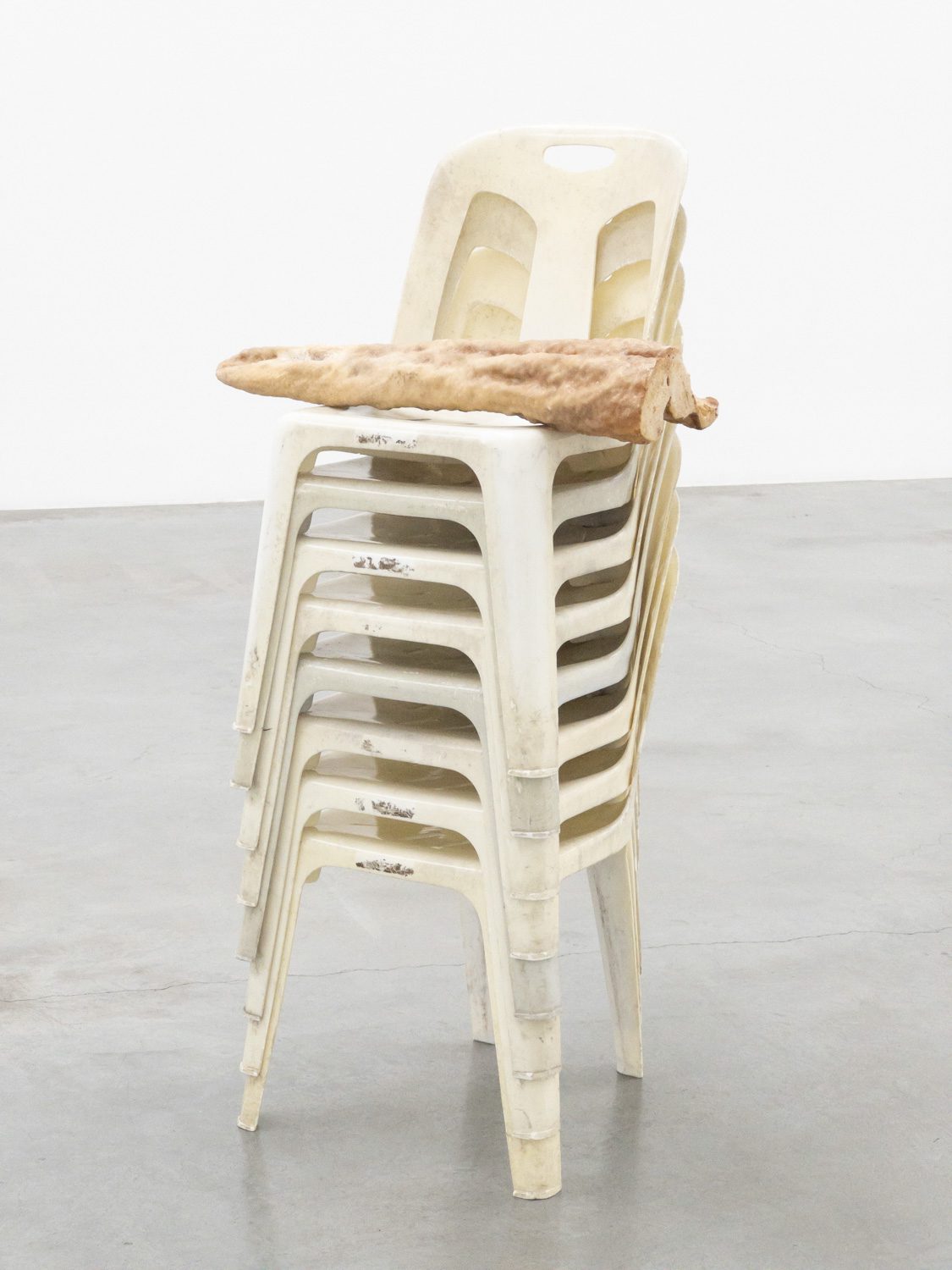
Pillar (2024)
Stalactite from the closed Rare Stone Museum: In Thailand’s Rayong province, there is a condominium called Hinsuay Namsai (beautiful rocks and clear water). Below the swimming pool of this condominium was the supporting structure. Tanatchai once explored and played in that chamber and uncovered what lay beneath. It was a space of discarded items, from chlorine tanks to stacked damaged plastic chairs with a variety of items piled on top. What intrigued him the most about this space under the swimming pool were the concrete stalagmites, resembling those commonly found in caves. He was captivated by the unique features of the area. In certain spots, stalactites took on shapes reminiscent of fried eggs emerging from the ground. This experience brought to mind the headline of a newspaper article, ‘A New Cave,’ prompting him to question what makes a space a cave.
The borrowed plastic chairs (Wat Ruak)–For Tanatchai, the act of stacking was akin to accumulating initial ideas. He envisioned a display featuring old plastic chairs stacked on top of each other, adorned with stalactites. He contemplated the elements that constitute an event; perhaps it would be better if the chairs used for the stacking were borrowed from a temple. He thought about the particular connection that existed between bones and stalactites—the temporary nature of impermanent things. Solid objects were temporarily placed in the space, and eventually, these items would vanish, returning to their original place once the exhibition concluded.
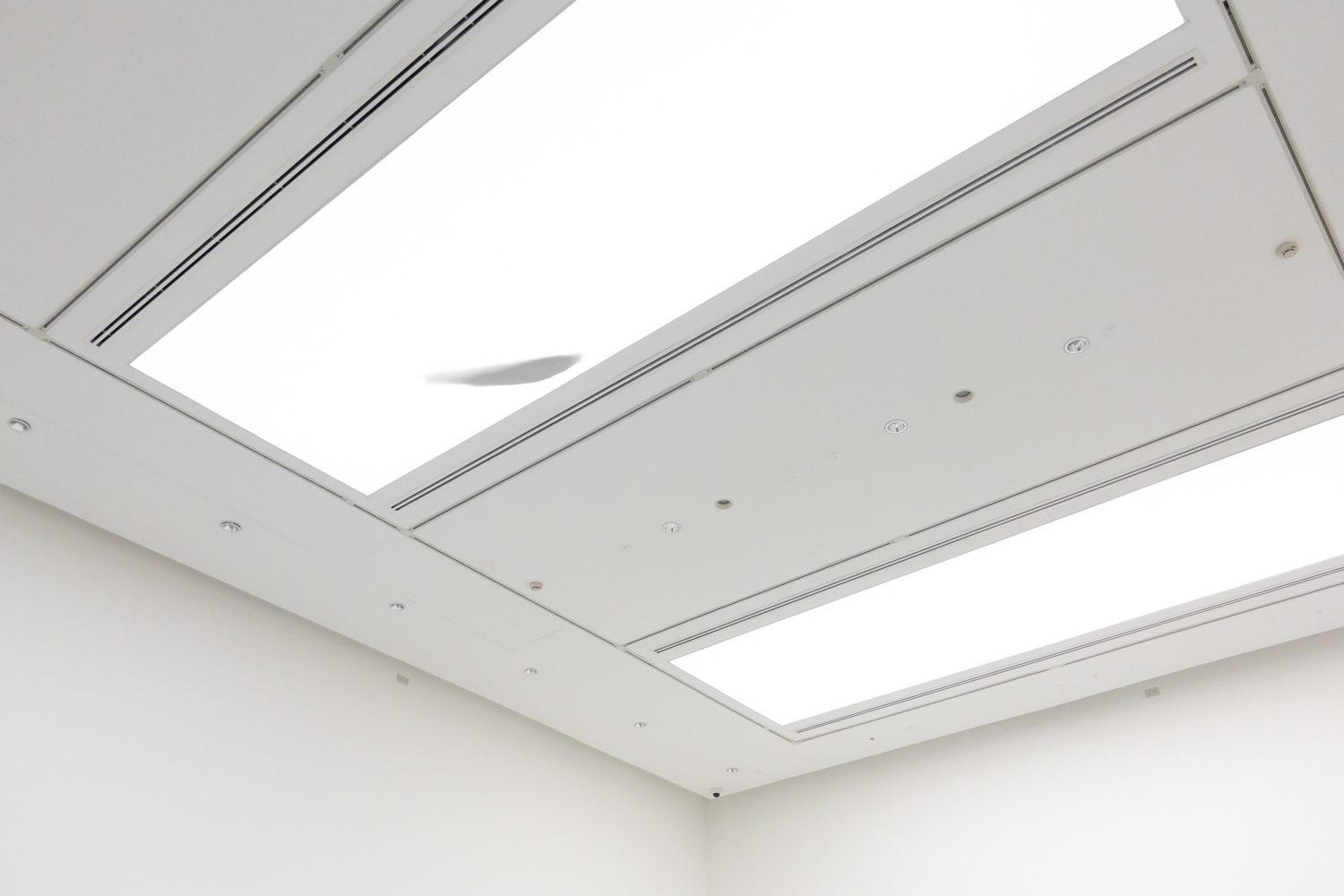
Gaunggang (2024)
Narrative
It is inevitable for artwork to generate some sort of narrative. However, the fragmented nature of various objects in the gallery space allows them the ability to unravel themselves. It’s similar to swallowing a pill that slowly dissolves or the self-fragmentation that breaks down an object into other objects and various other meanings, including the unique characteristics of the exhibition space. It is a narrative that lacks a specific structure or even an attempt to arrange a chronological timeline. Even the language itself cannot control the viewers who come to experience the work.
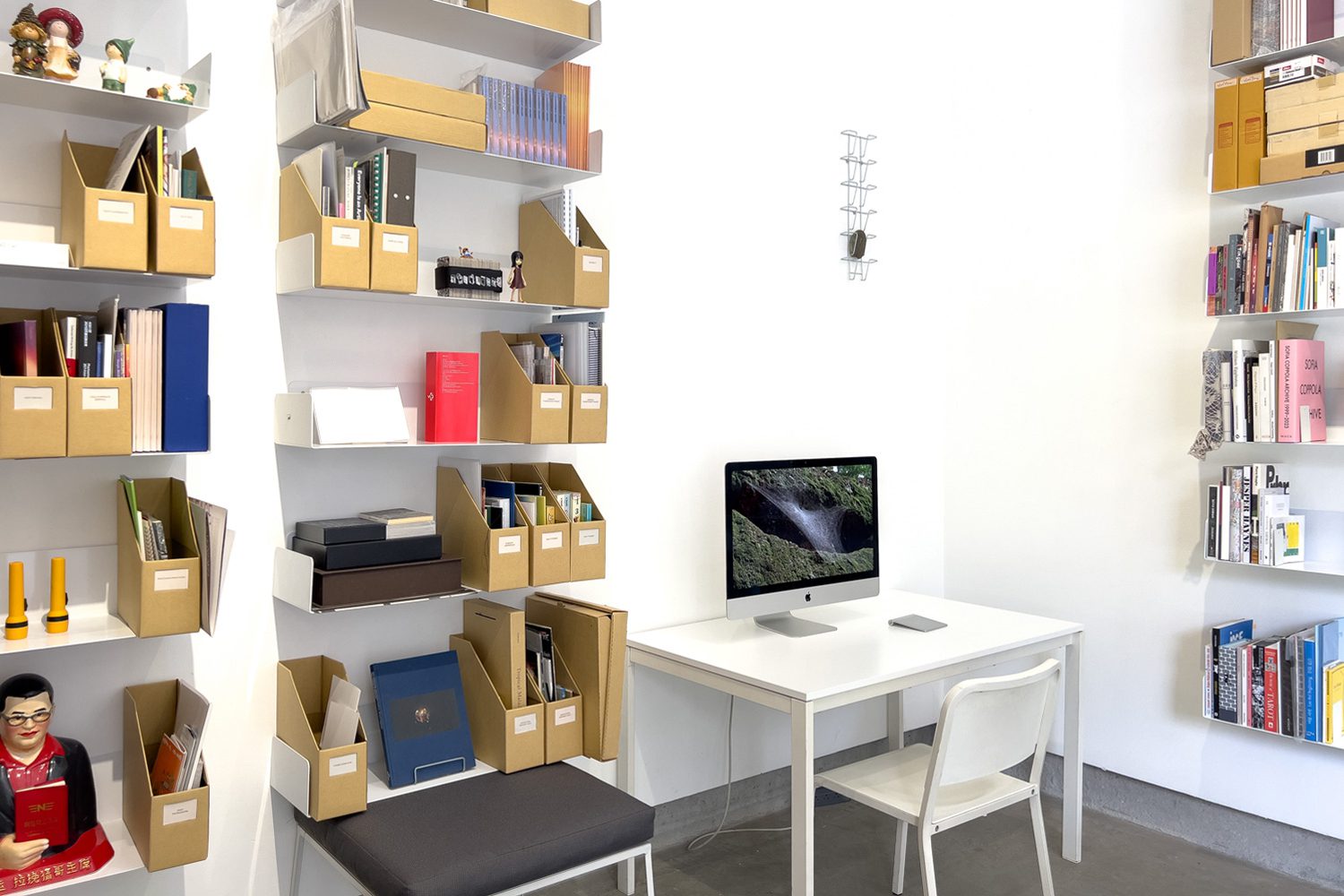
Sa (2024) / Core (2024)

Untitled (smoke rises vertically) (2024)
In this exhibition, the artist has decided not to include numerical indications on the floor plan of the displayed objects in the pamphlet. By avoiding the preconceived sequential perception that numerical order imposes, the decision aims to create a fluid and unordered experience for viewers. They want the exhibition experience to be unrestricted by a particular format, as if the various objects simply drifted into this space for a brief period of time. Placed in locations with particular significance, they circulate, forming an experiment that might challenge the viewers. The hope is that those who come will encounter something transformative in return.
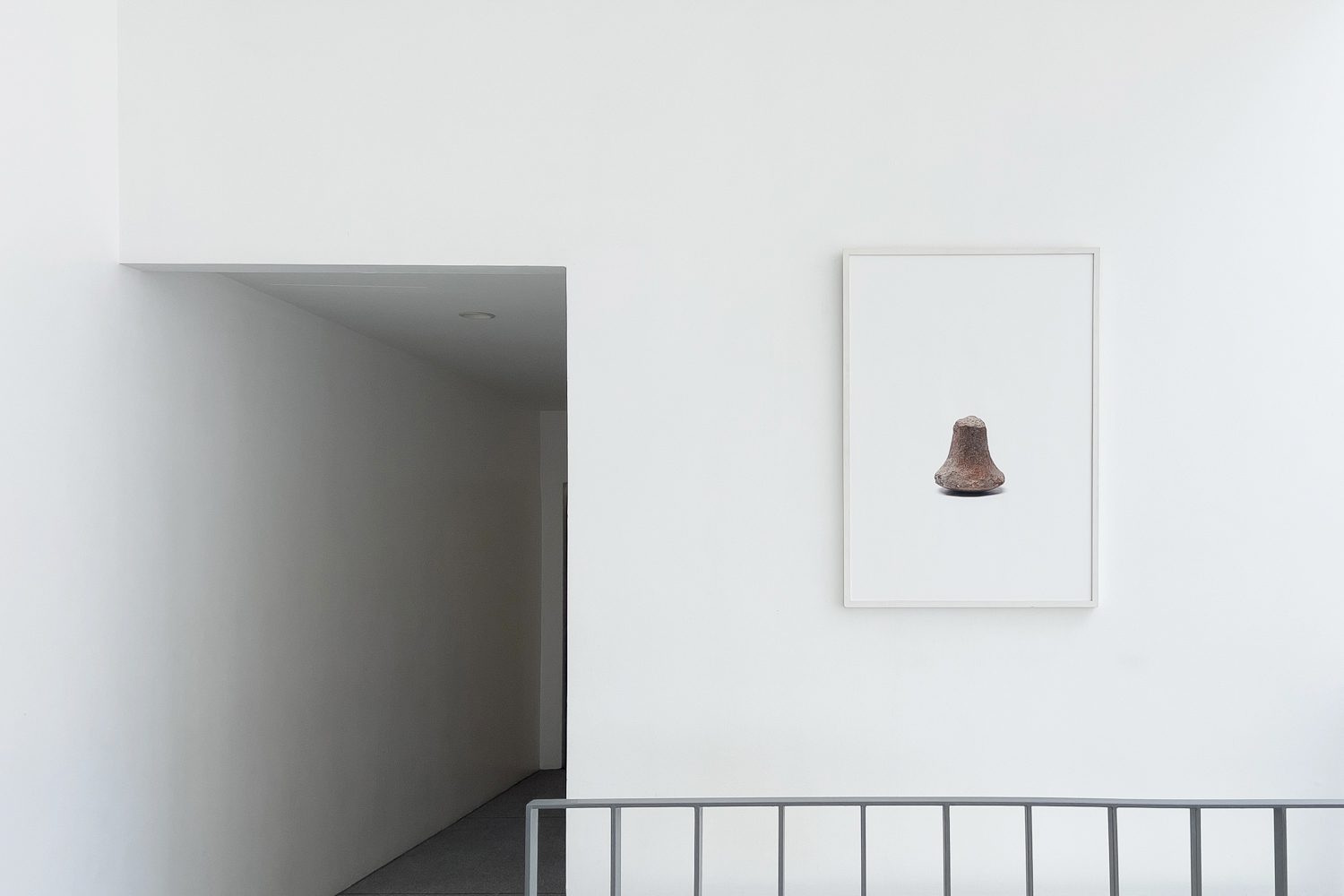
Beats (2024)
The exhibition, ‘A NEW CAVE,’ will be showcased from February 10th to March 23rd, 2024, at BANGKOK CITYCITY GALLERY.


